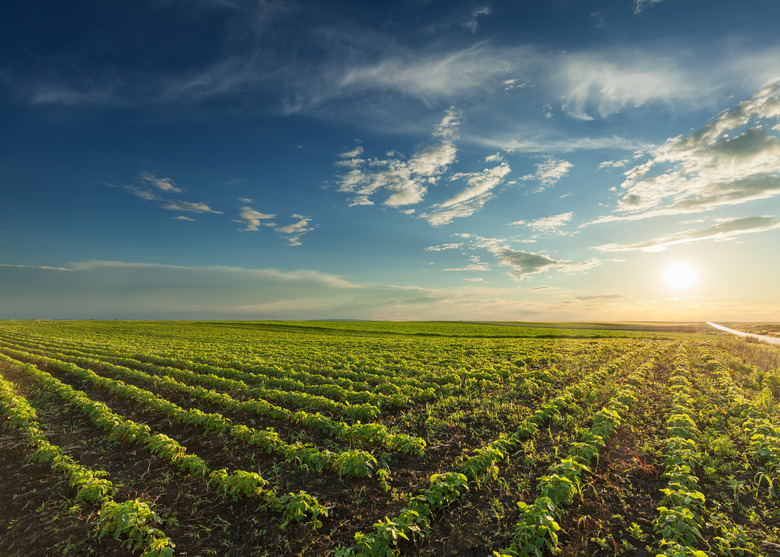What Are The Impacts Of Humans On Grassland Biomes?
Population growth among humans negatively impacts biomes around the world. Expanding human civilization affects grassland biomes – characterized by large areas of land where grasses are the primary form of plant life – in specific ways. The grazing land for many species of animals, which in turn provide a food source for larger predators, is often at risk because of human expansion into these areas.
Urban Development
Urban Development
The biggest impact that humans have on grasslands is by developing open areas for farming or urban development. Such development is prevalent because grasslands are generally level areas with little need for major work to develop the land. Land development drives animals away from populated areas and changes the conditions of the environment.
Agriculture and Farming
Agriculture and Farming
Grasslands covered to cropland or farms reduces the food source for many wild animals. In this case, the animals are considered pests by the farmers when they feed on the crops, or attack domestic herds. This can lead to migration or possibly the wildlife starvation.
Not only does the conversion of land into crops change the ecosystem, but so does the farming of livestock. If livestock are allowed to graze in areas where wild animals live, they compete for the food source and can deplete it. This overgrazing is a problem especially in the drier grassland regions, where the grass resources can be depleted. Over-plowed land strips rich nutrients from oil. Salts from irrigation waters damage soil, resulting in dust bowls, similar to what happened in the 1930s American West.
Hunting to Extinction
Hunting to Extinction
Hunting presents a serious impact on grassland biomes. European settlers devastated the American bison population which almost became extinct because of over hunting for the fur and meat. Poachers likewise kill rhinoceroses for their tusks, and elephants for their ivory on Africa savannas without any regard to protection of the species.
Global Warming
Global Warming
As the Earth's climate changes in response to human involvement, the grasslands become vulnerable. Climate change causes ecological succession, in which the ecosystem of an area develops into another. Changing temperatures, weather patterns and water availability can throw an area of grassland out of balance and change it forever.
Drier Climates and Fires
Drier Climates and Fires
Because grasslands are typically found in drier climates, the plant life is susceptible to fire. Wildfires occur as a natural process within an ecosystem and play a critical role in replenishing the land. But fires tend to originate more frequently near human populations, particularly in drier months.
Positive Impacts
Positive Impacts
Humans do not have only a negative impact on grasslands. Some humans do their part to preserve the land and restore it. National parks have been developed around grasslands, and some organizations replant depleted areas. Governments have enacted laws against the hunting of endangered animals. In particular, the U.S. National Parks Service has preserved land to foster the American bison population. While poaching still exists in many areas, there are efforts to stop it.
Cite This Article
MLA
Carr, Kevin. "What Are The Impacts Of Humans On Grassland Biomes?" sciencing.com, https://www.sciencing.com/impacts-humans-grassland-biomes-2594/. 13 March 2018.
APA
Carr, Kevin. (2018, March 13). What Are The Impacts Of Humans On Grassland Biomes?. sciencing.com. Retrieved from https://www.sciencing.com/impacts-humans-grassland-biomes-2594/
Chicago
Carr, Kevin. What Are The Impacts Of Humans On Grassland Biomes? last modified March 24, 2022. https://www.sciencing.com/impacts-humans-grassland-biomes-2594/
